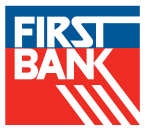Inflation and the prices of goods and services are still higher than average, coupled with the lingering effects of the pandemic, Americans are turning to what’s left in their savings account to help cover expenses. According to a study, 71% of Americans have a savings account, but 60% of them have less than $1,000 in their account. While the average medical emergency costs at least $1,000, this means that more than half of all Americans would struggle being able to pay for a medical emergency. Additionally, 28% of Americans believe that they could survive for three months on their savings, and shockingly, nearly 60% of Americans don’t think they could cover a $400 emergency expense today.
Knowing these statistics, how does your savings stack up to other Americans? Is there room for improvement? It’s recommended that you have three to six months of living expenses saved in your emergency savings account.
We’re outlining some strategies below that you can implement to help build your savings up quicker.
1. Cut expenses
A simple way to start saving more each month is to review your subscriptions and cancel any services that you aren’t using. Are you paying for television and movie streaming services or video gaming services that you don’t use anymore? What about food delivery services? Cancelling any services that you no longer use is an effortless way to save a little more each month. You’ll be surprised at how fast these expenses add up.
2. Automate your savings
Automating a portion of your paycheck into your First Bank savings account is another simple way to ensure you’re working toward meeting your savings goal. Consider setting up a direct deposit for your paycheck and identifying a specific amount to automatically deposit into your savings account. This will remove the need to manually transfer funds from your checking account into your savings account each pay period. Additionally, take the America Saves Pledge to help you stay on track towards your savings goals.
3. Look for coupons or discounts
Another strategy to consider is to look for discounts or use coupons. Many grocery stores have ads that include discounted or sale items. These can be received through the mail, and if you don’t receive them, they are provided at the store. Additionally, many stores carry generic versions of products that are similar in quality but are marked at a lower price than the name brand product. You’ll be spending less at the grocery store while still buying the same types of products.
4. Tap into new sources of income
Do you have old clothes that you no longer wear or toys that your children don’t play with anymore? Consider selling them to resale shops or list them for sale online. This is an easy way to make some extra cash while also getting rid of things your family no longer needs. Additionally, if you have a craft or hobby that you enjoy, consider selling your finished products to make additional cash.
Working to rebuild your savings will take time and persistence. Look for opportunities where you can save extra cash and keep in mind how having some extra money saved will be able to help you if you experience a financial emergency. For more information on how First Bank can help you meet your financial goals, contact a trusted First Bank advisor today.


